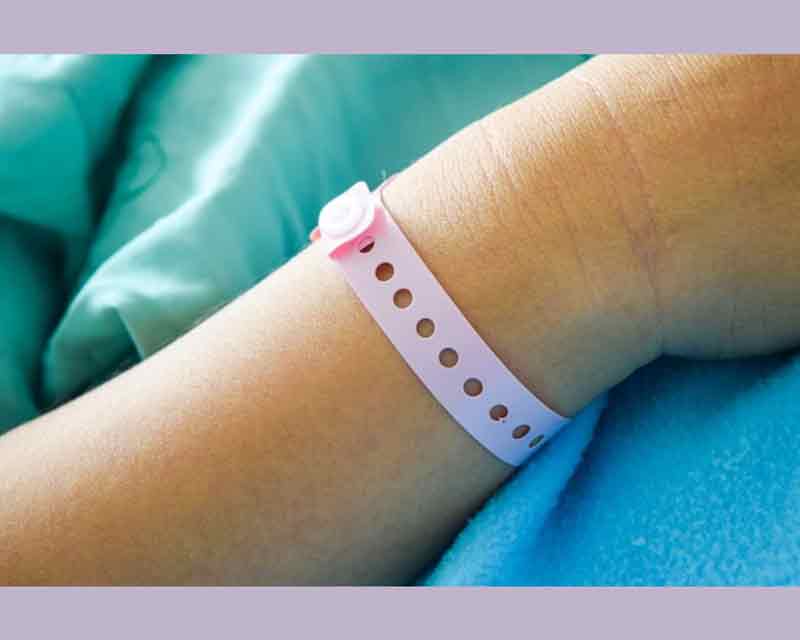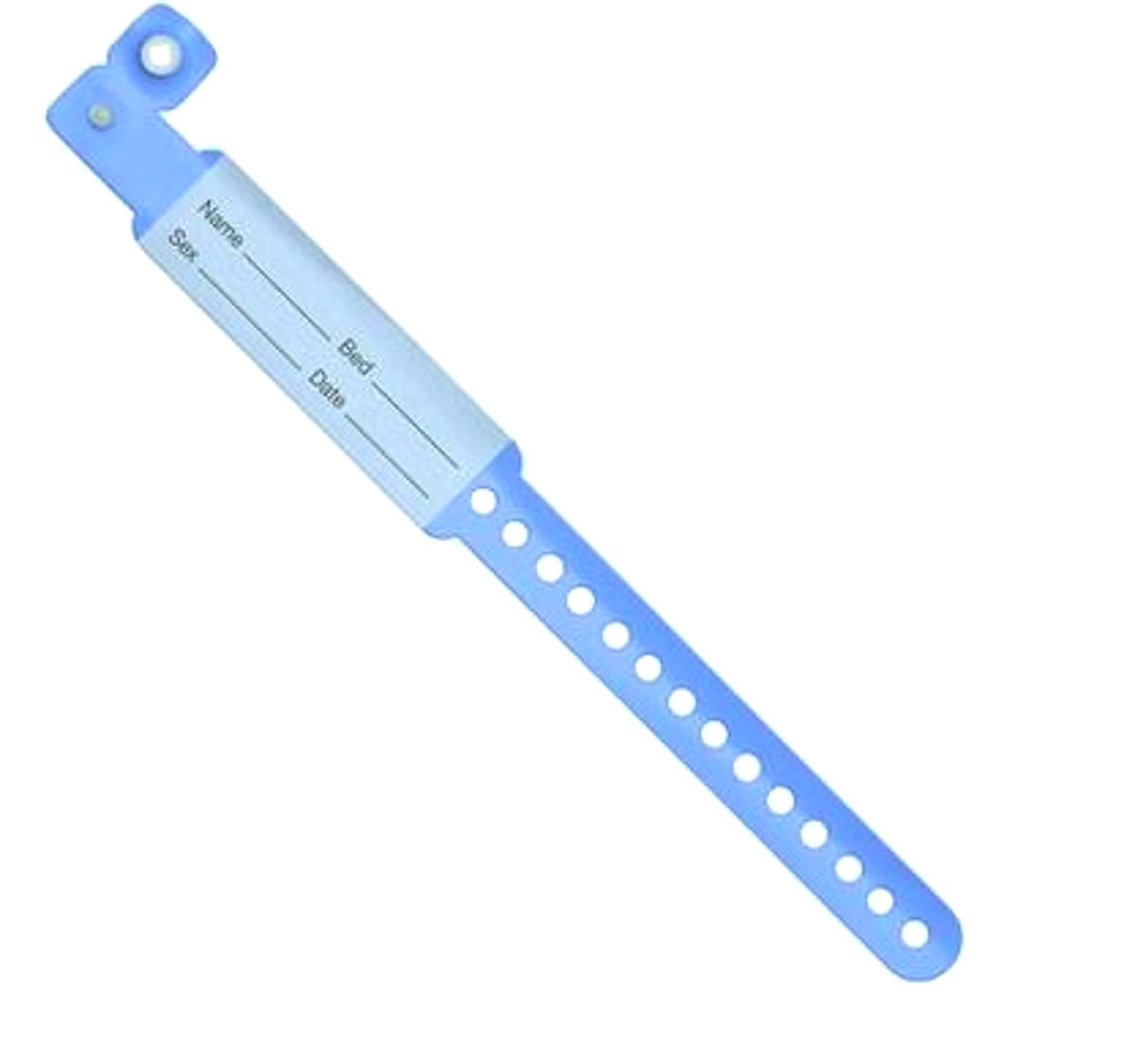Discovering the Numerous Kinds Of Patient Identification Band Utilized in Medical Facilities
In the elaborate globe of health care, the crucial function of Patient Identification bands often goes undetected. These bands, varying from basic paper wristbands to advanced RFID bands, develop the backbone of Patient safety procedures, making sure precision in Patient Identification.
Comprehending the Relevance of Patient Identification Bands
While they may seem like simple devices, Patient Identification bands play a vital duty in clinical facilities. These bands work as a critical tool for validating Patient identity, protecting against clinical errors connected to misidentification. The bands typically show necessary details such as the Patient's name, age, blood group, and any kind of known allergies. They enable health care specialists to promptly access this crucial info, thereby helping with timely and precise clinical therapy. Patient Identification bands also aid in improving administrative tasks, making sure precise record-keeping and invoicing. Regardless of their simplicity, these bands personify the concept of Patient security, a cornerstone of top quality health treatment. Without them, the risk of clinical mistakes, and as a result, Patient injury, could considerably increase.
Standard Paper Wristbands: Their Use and Limitations
Typical paper wristbands have actually been a staple in Patient Identification throughout various clinical centers. While their usage is widespread, they nurture specific limitations that might affect their performance in Patient administration. This section will concentrate on the extent of their application and the intrinsic disadvantages connected with their usage.
Paper Wristbands: Use Range
In the world of Patient Identification, paper wristbands have long held a critical role. These bands are generally utilized in outpatient setups, where the Patient's keep is temporary. Despite developments in modern technology, the humble paper wristband remains a economical and trusted remedy for Patient Identification in numerous medical care circumstances.
Limitations of Paper Wristbands
In spite of their extensive usage, paper wristbands are not without their downsides. In addition, paper wristbands usually lack the technical abilities of even more contemporary choices, such as barcoding or RFID chips, limiting their capability to simply presenting composed details. Paper wristbands can cause pain or skin irritation to some individuals, particularly when put on for extended periods.
Barcoded Wristbands: Advancements in Patient Identification
While Patient Identification has actually long been a critical aspect of healthcare, the introduction of barcoded wristbands represents a substantial jump onward. These bands utilize the simpleness of barcoding modern technology, permitting for Patient info to be quickly checked and accessed. They improve the speed and accuracy of Patient Identification, reducing the risk of medical mistakes connected to misidentification.
Radio Regularity Identification (RFID) Bands: a Step Towards Futuristic Healthcare
The advancement of Patient Identification bands has caused the development of Superhigh frequency Identification (RFID) Bands (patient identification band). These innovative devices existing crucial benefits for health care facilities, offering a more reliable and technically advanced means of Patient Identification. The implementation of RFID in medical care is a considerable step towards an extra futuristic approach to Patient administration and safety
Recognizing RFID Bands

RFID Bands: Key Benefits
Mainly, these bands enhance Patient safety by this link giving accurate, immediate Identification, thereby reducing medical mistakes. RFID bands can store a vast amount of Patient data, including medical history and allergies, enabling customized treatment. On the whole, RFID bands represent a considerable innovation in Patient Identification technology, benefiting both clients and health care carriers.
Implementing RFID in Healthcare
These bands provide a smooth method to track and identify people, ensuring their safety and security and boosting effectiveness in treatment procedures. RFID bands lower clinical errors by providing exact Patient Identification, which is critical in stopping misdiagnosis or wrong medicine administration. Therefore, the implementation of RFID bands is a substantial step in the direction of enhancing Patient security and healthcare distribution.

Color-Coded Wristbands: Helping in Quick and Accurate Medical Diagnosis
In the dynamic environment of a medical facility, color-coded wristbands have become essential devices for swift and accurate Identification of a patient's clinical problem. These wristbands, worn by clients, carry details shades that correspond to different clinical problems or statuses. For example, red might suggest allergic reaction risks, while yellow could symbolize a fall threat. This system is designed to offer prompt visual cues to doctor, improving Patient security and care quality. In emergency situation situations, using these wristbands enables quick decision-making. The performance of color-coded wristbands depends on the uniformity of shade analysis across medical care institutions, needing usual requirements for regular application.
Approaches for Effective Application and Monitoring of Patient ID Bands
Accomplishing optimal usage view it now of Patient Identification bands necessitates a well-structured strategy for their application and management. Patient education is also vital; clients must comprehend the purpose of the bands and the demand for their constant wear. It's crucial to have a backup strategy in location, such as barcode scanning or biometrics, to ensure that Patient Identification is never ever compromised.
Verdict
Patient Identification bands are vital in medical centers to ensure safety and security and accuracy. Conventional paper, barcoded, RFID, and color-coded wristbands each hold special advantages, ranging from cost-effectiveness to sophisticated data storage space and instant clinical alerts. Efficient implementation and administration of these bands can significantly minimize clinical errors, improve performance, and improve general Patient care. Hence, understanding and utilizing these Identification tools is extremely important for maintaining high requirements in medical care.
These bands, differing from simple paper wristbands to advanced RFID bands, develop the backbone of Patient safety and security procedures, making certain precision in Patient Identification.The evolution of Patient Identification bands has brought about the development of Radio Frequency Identification (RFID) Bands. Generally, RFID bands stand for a considerable improvement in Patient Identification innovation, benefiting both individuals and health care carriers.
RFID bands lower clinical mistakes by providing accurate Patient Identification, which is vital in protecting against misdiagnosis or incorrect medicine see it here administration. Patient education and learning is additionally critical; people should recognize the objective of the bands and the demand for their continuous wear.